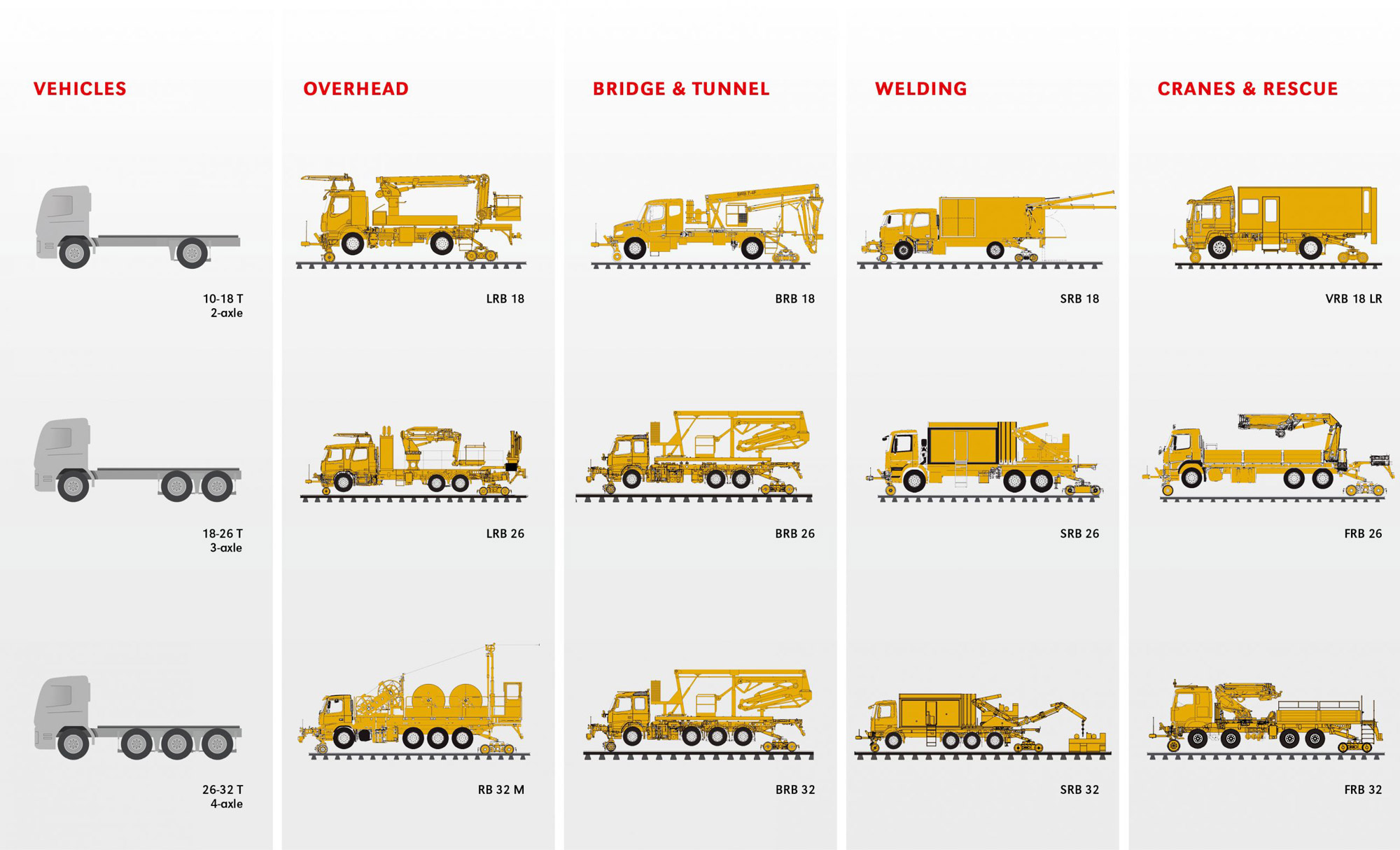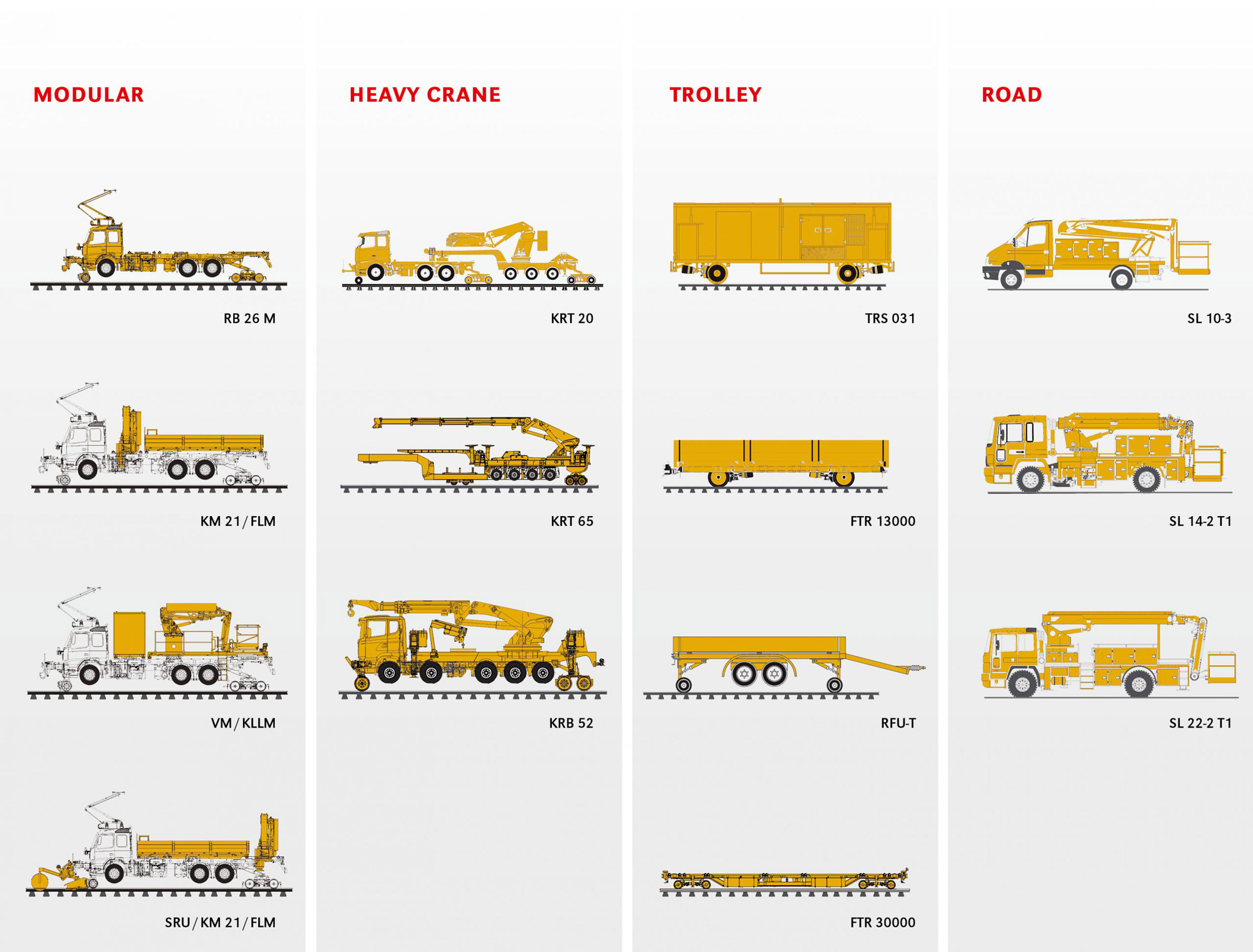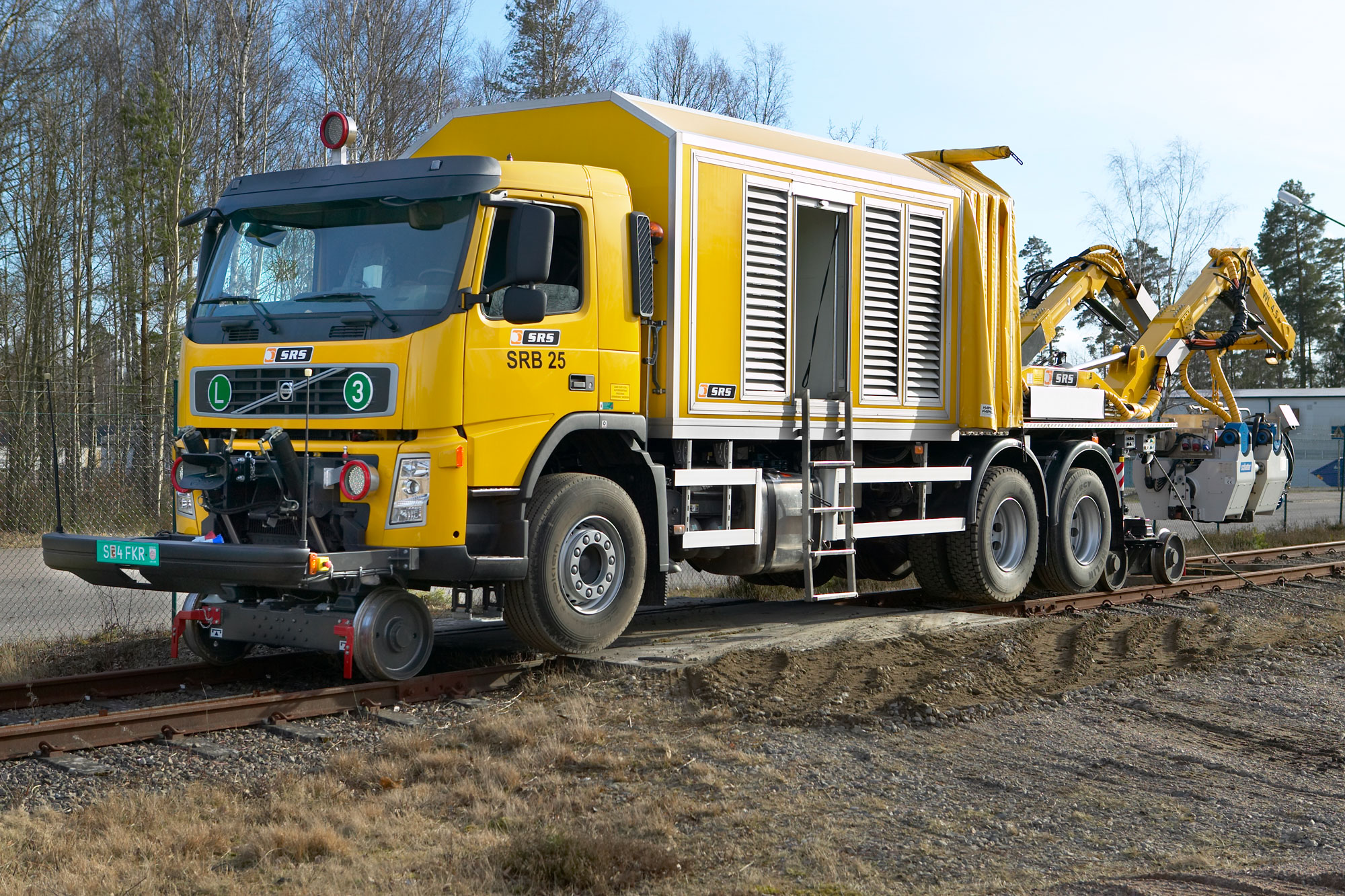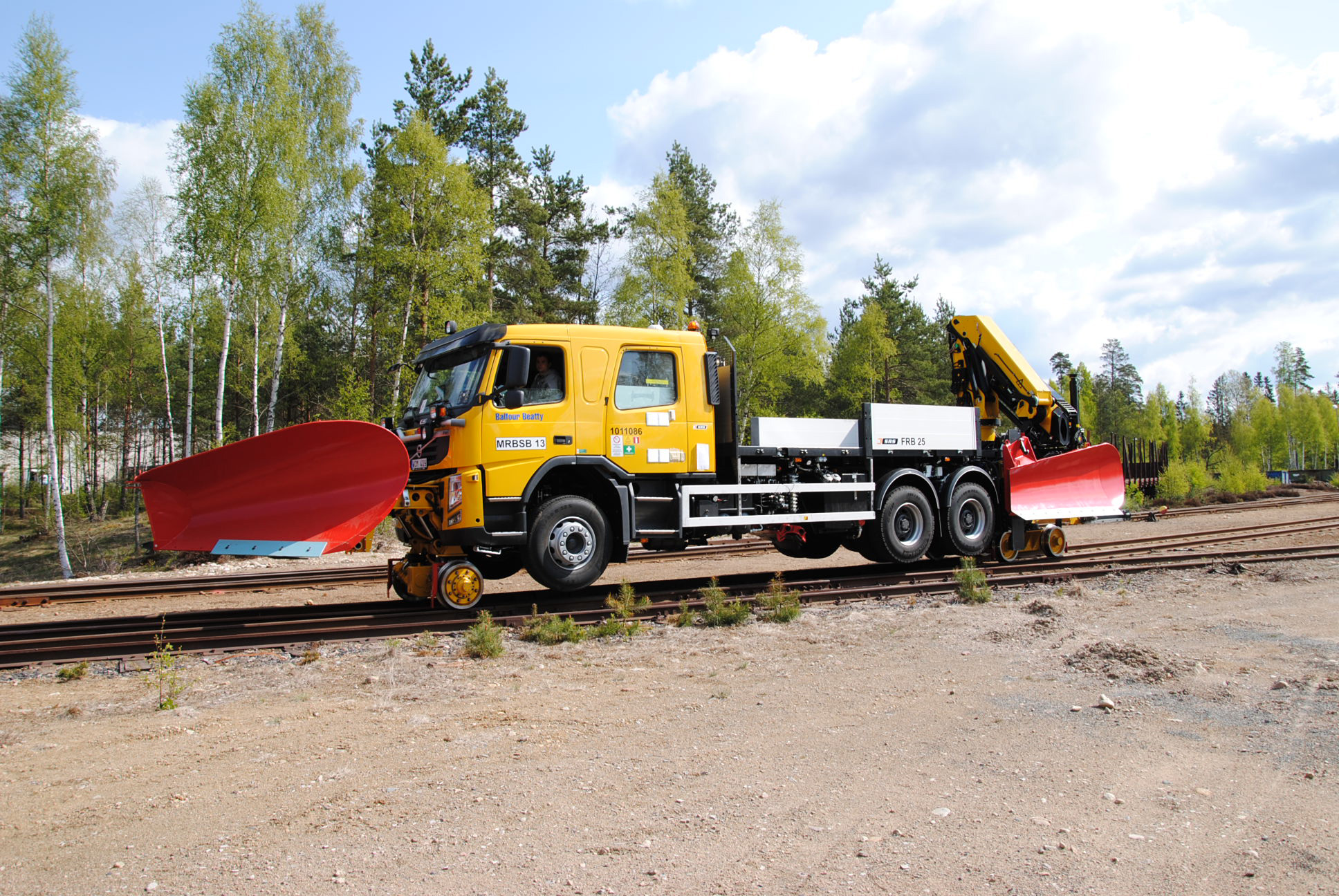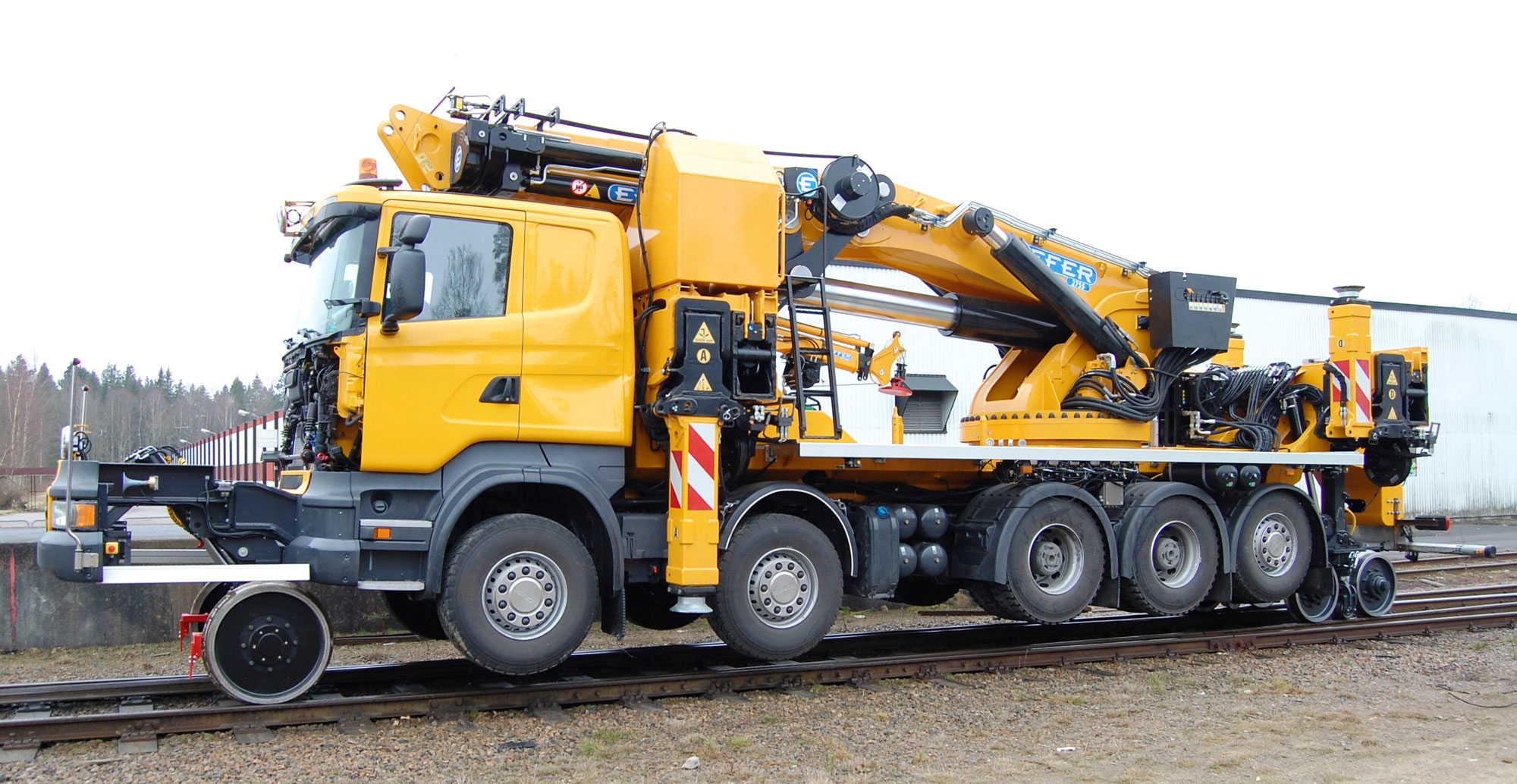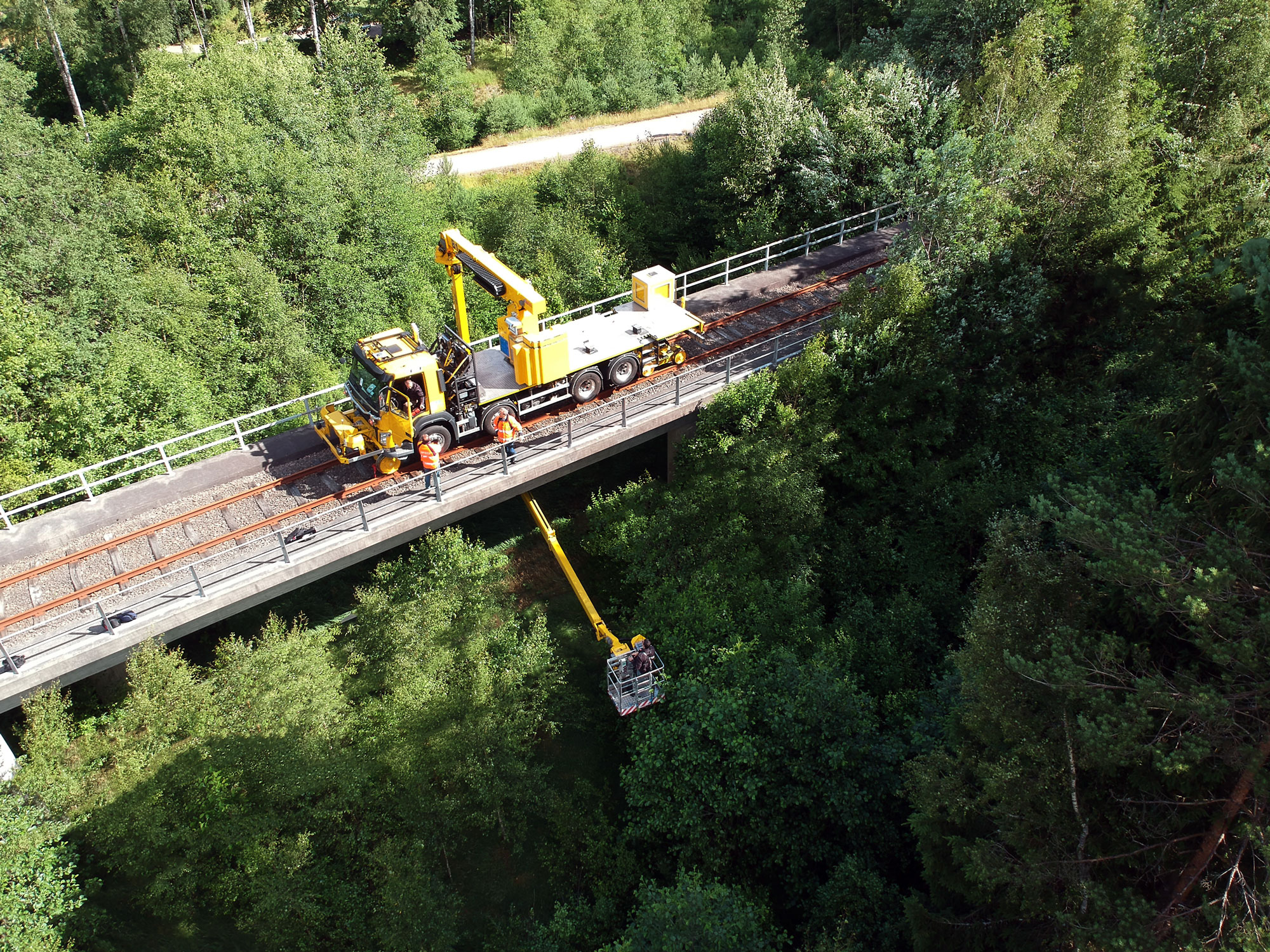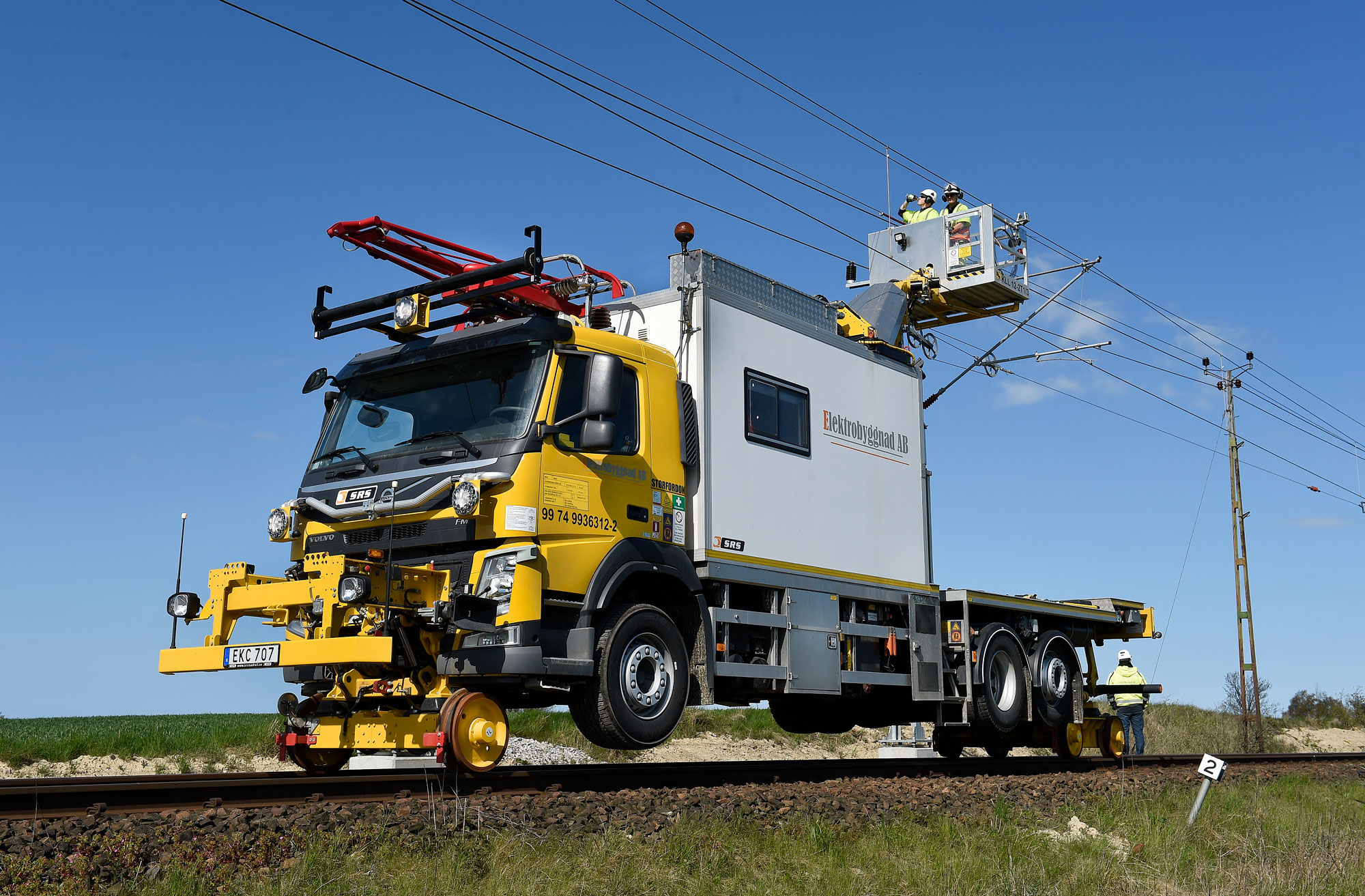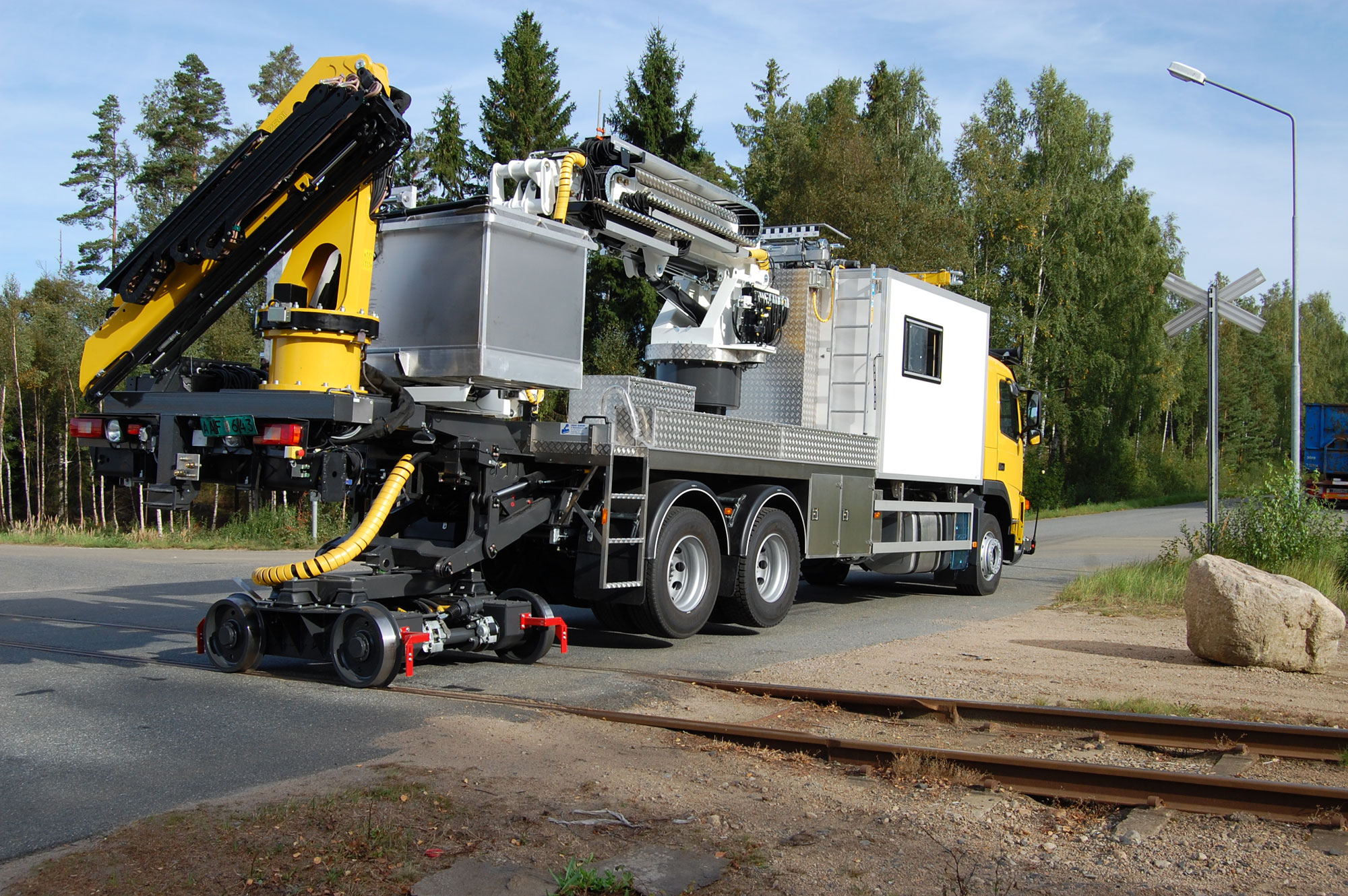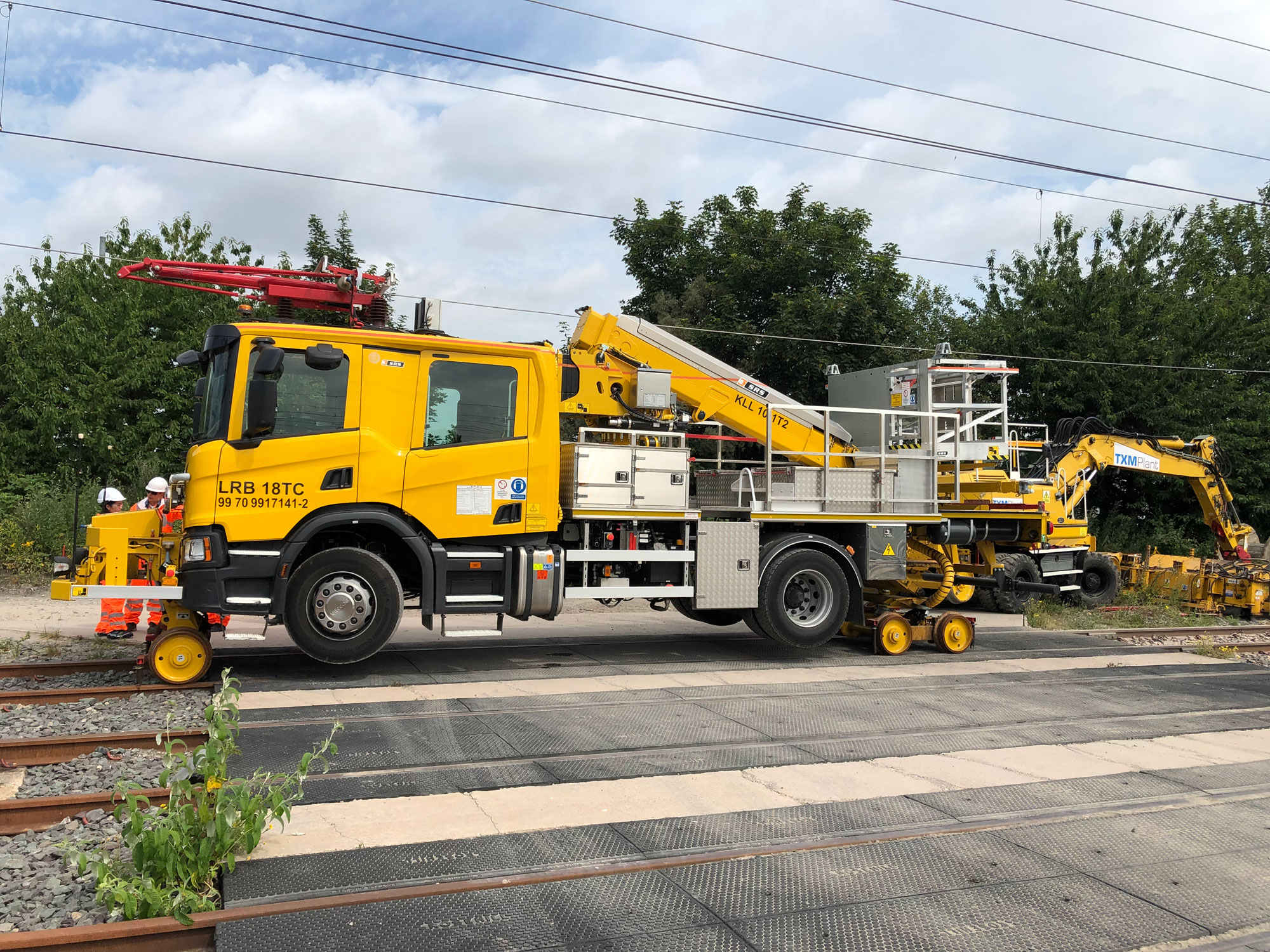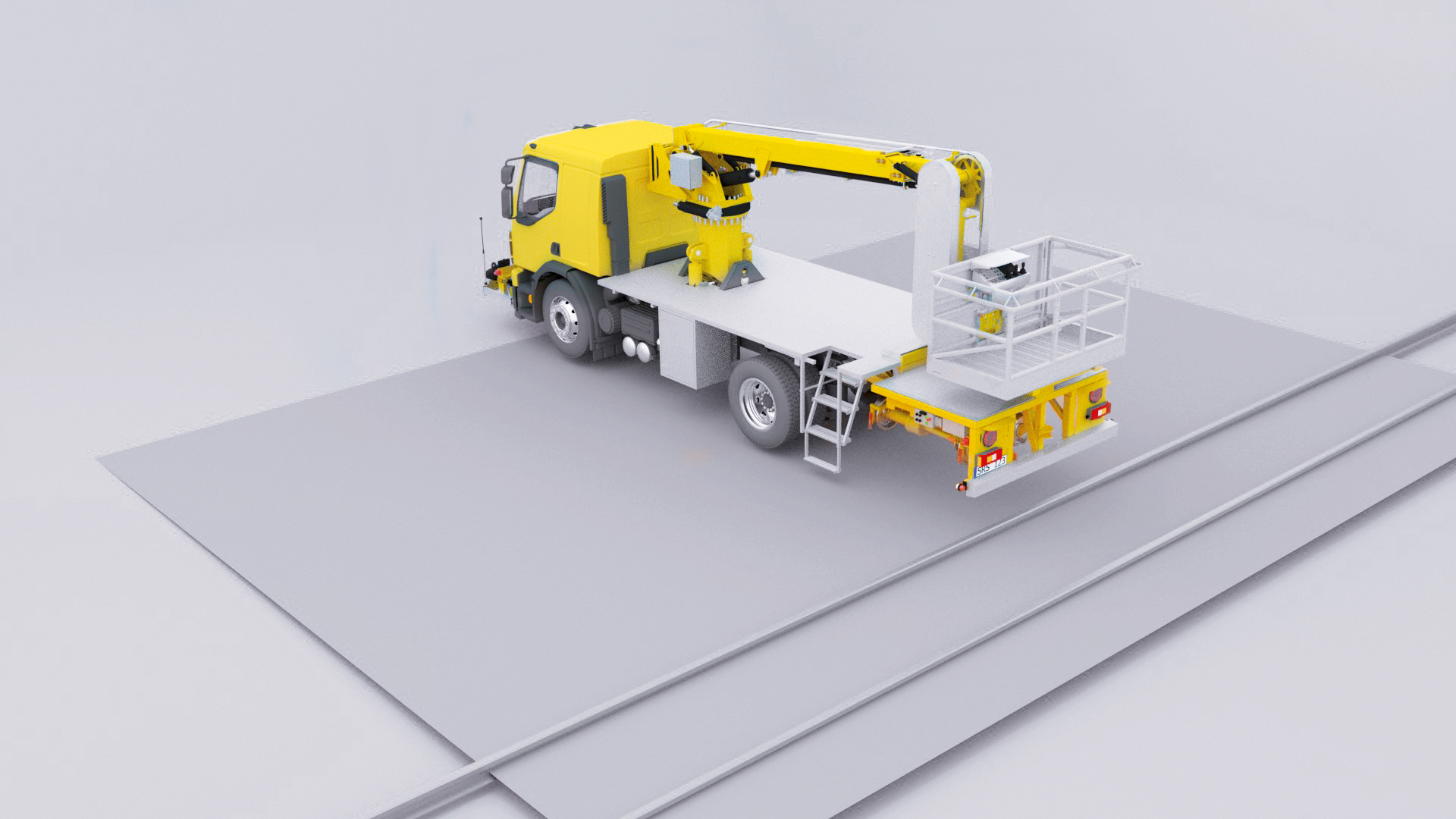
1. When mounting the track, the road-rail vehicle reverses to the track so that the rear end of the bogie is positioned above the track.
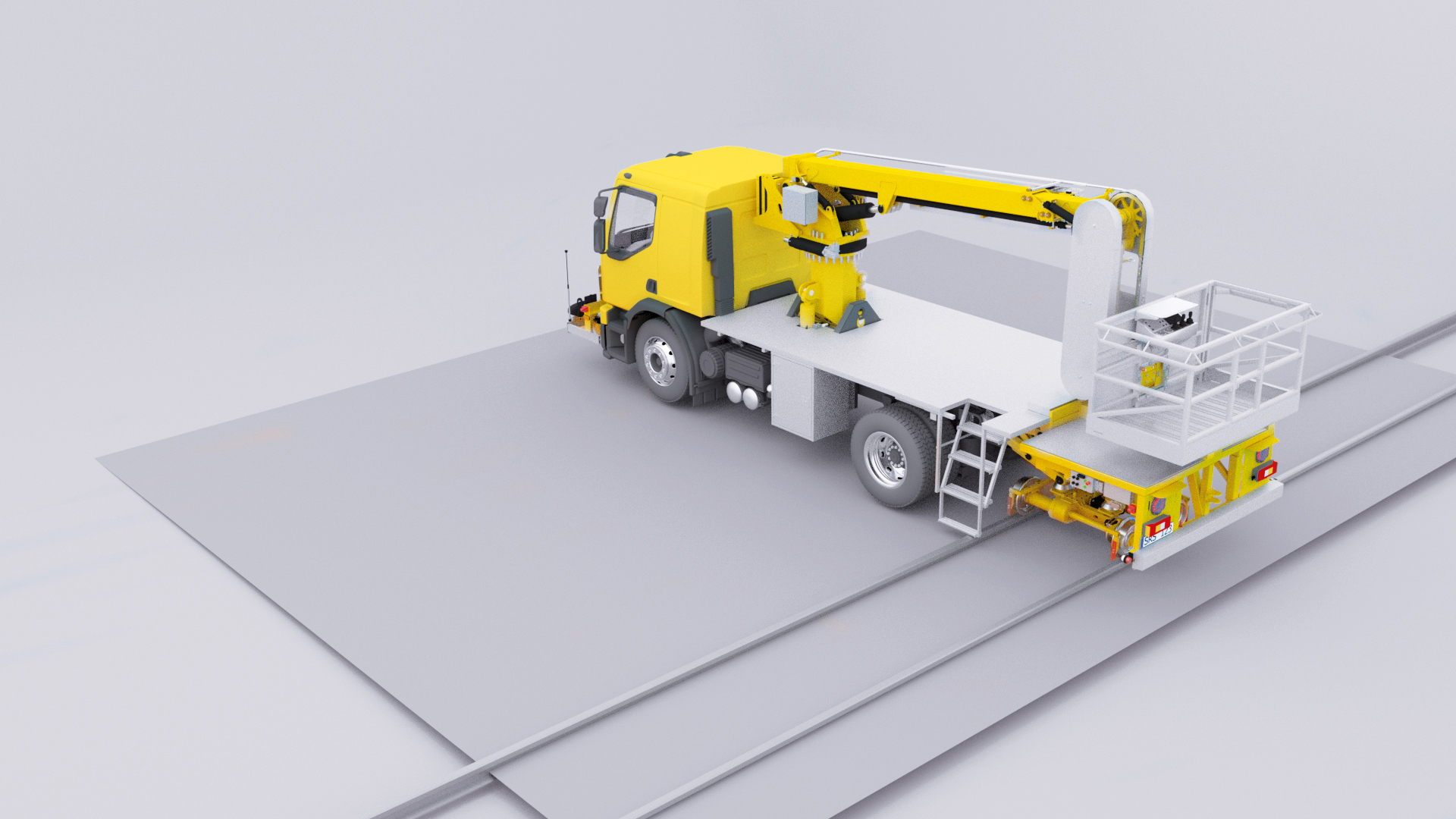
2. The bogie is lowered with hydraulics onto the track and the rear end of the vehicle is raised from the road.
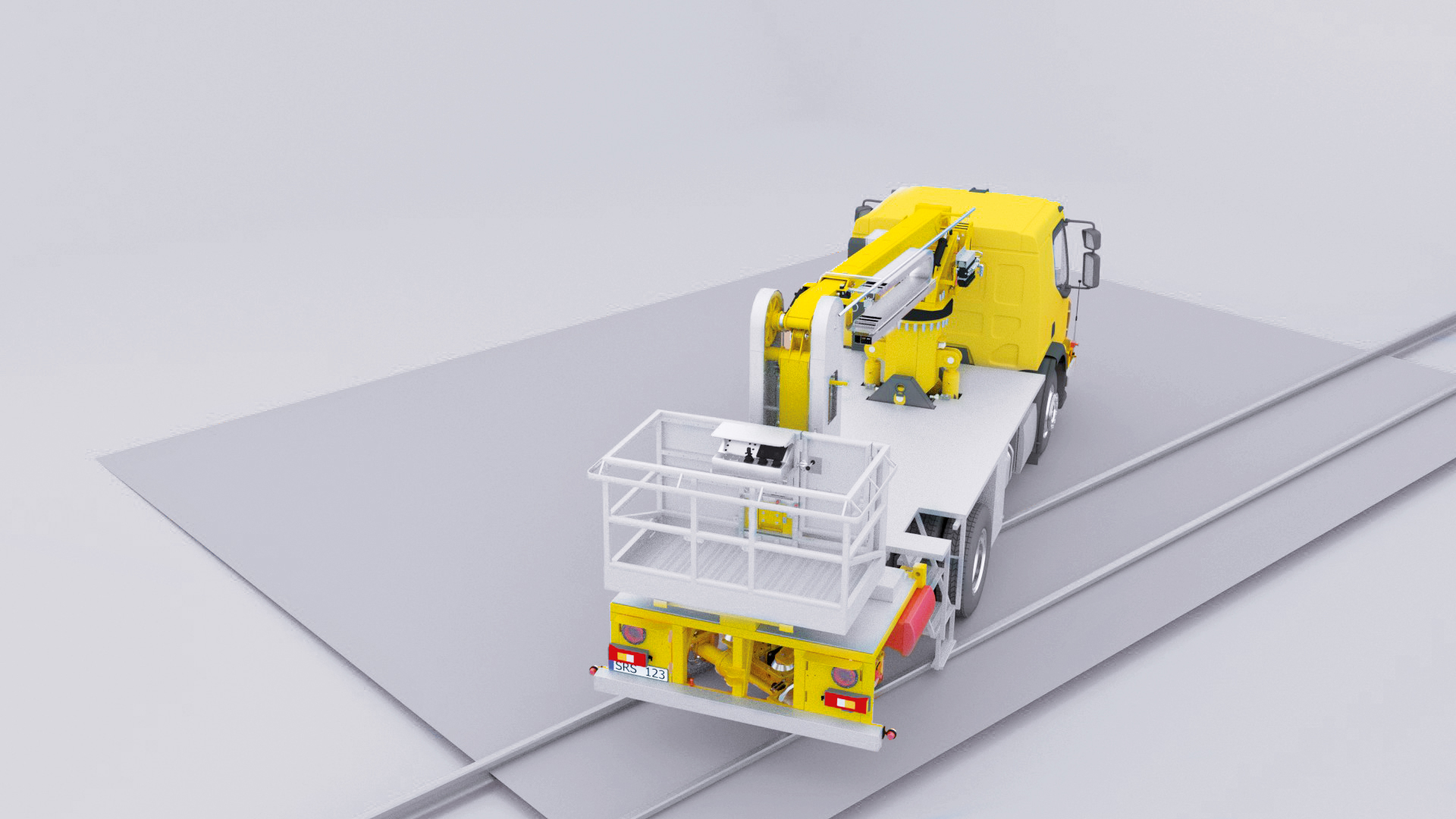
3. The front road wheels are aligned to follow the movement of the vehicle. While the rear bogie is driven backwards, the vehicle is raised onto the track. This enables the vehicle to drive in the line of a curve without restricting the space of the adjacent track.
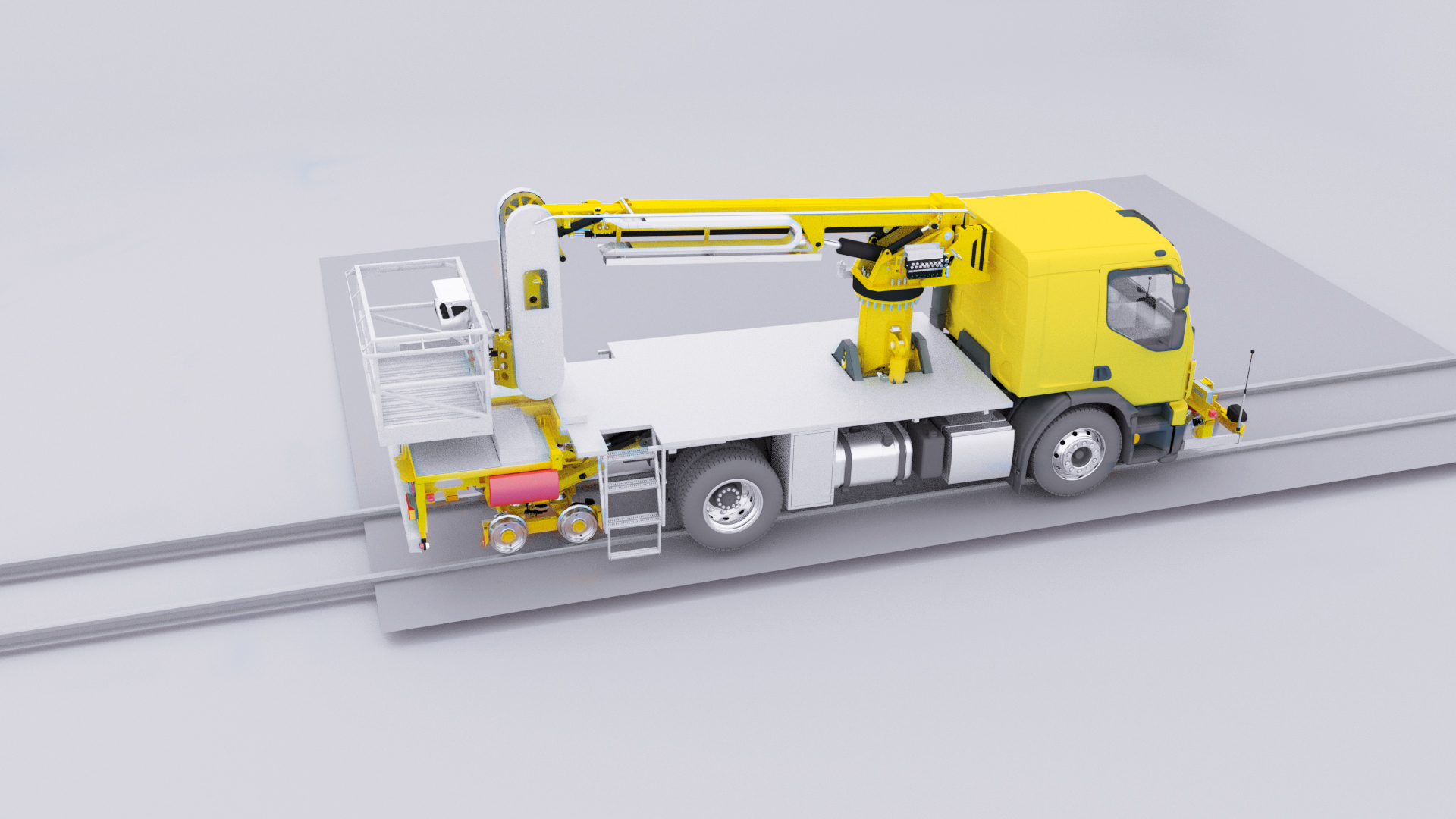
4. When the vehicle has reversed into the right position on the track, the front rail wheels are directly above the rails. The front rail wheels are now lowered with hydraulics onto the track. The front road wheels are lifted from the railway crossing.
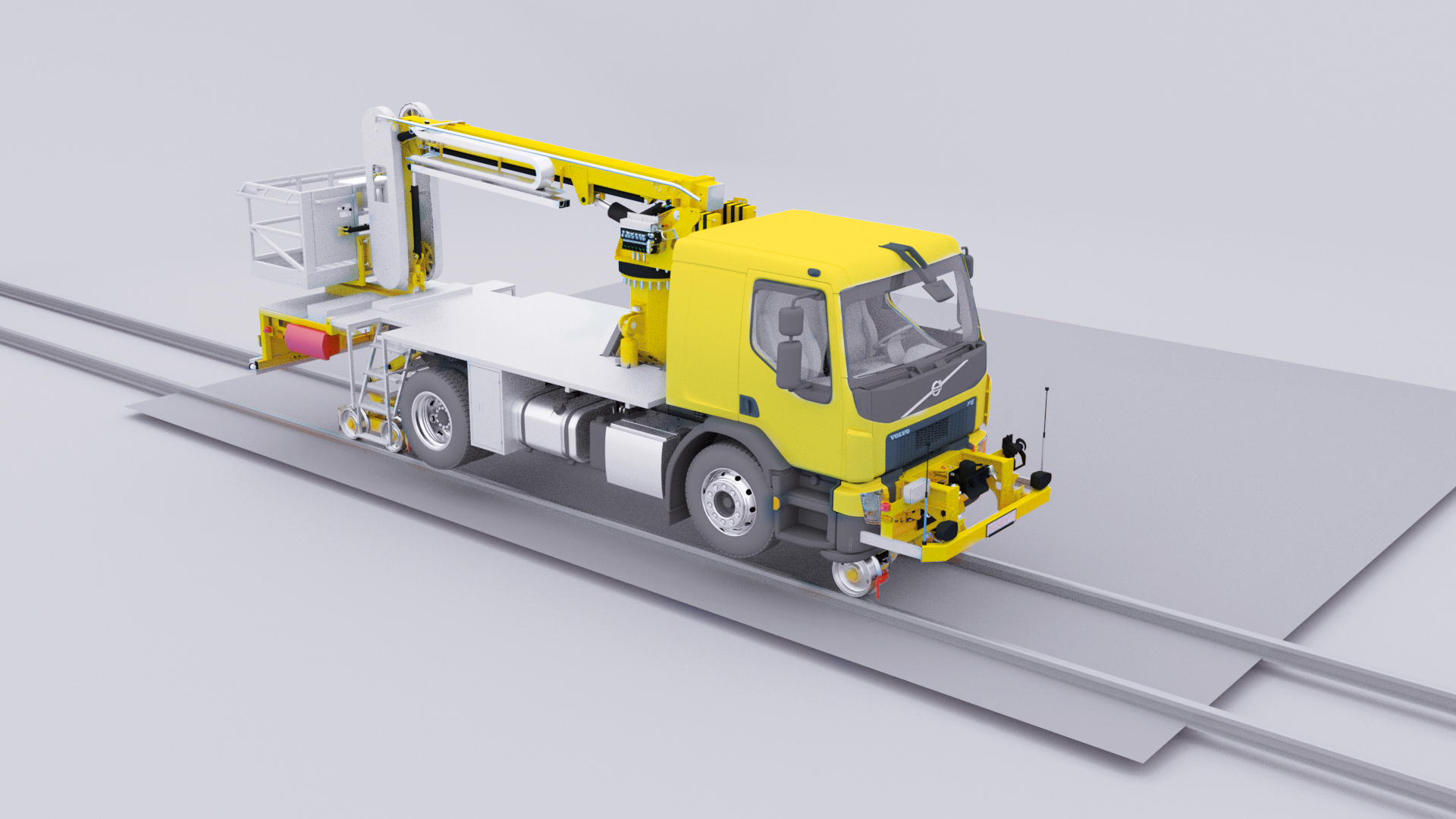
5. The vehicle is now in the right position to be deployed.
